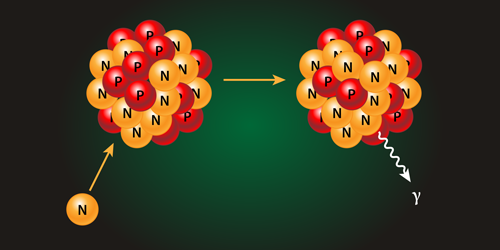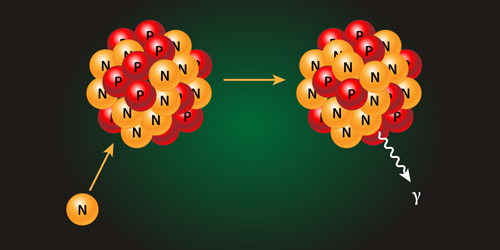Neutron Capture Constraints
Heavy nuclei are typically forged in high-energy astrophysical events where neutrons collide and merge with nuclei. For highly unstable nuclei, researchers cannot directly measure this so-called neutron capture, so they must estimate the capture rates using highly model-dependent theories. A new study uses nuclear decay analysis to tightly constrain the neutron capture rate of the unstable nucleus nickel-69, which is an important stepping stone in building heavier nuclei.
Most elements heavier than iron can only form in a rapid neutron capture process, or r process, in which multiple capture events happen in a matter of seconds. Astrophysicists have proposed several situations where the r process may occur, such as in supernovae and neutron-star mergers. However, determining the output of heavy elements from each of these events will require better estimates of capture rates.
For their neutron capture rate measurement, Sean Liddick from the National Superconducting Cyclotron Laboratory at Michigan State University and his colleagues have used the so-called β-Oslo method, which involves analyzing the rays emitted by a nucleus. This is the first time that this type of analysis has been used to study a relatively light nucleus integral to the r process. The researchers measured the rays emitted by a sample of nickel-70, which is the nucleus that forms when nickel-69 captures a neutron. From these data, the team calculated the neutron capture rate for nickel-69 with an uncertainty 10 times smaller than previous estimates. Inserting this more precise rate into numerical simulations of the r process, the researchers were able to place tighter constraints on the estimated yields of nuclei with atomic mass between 70 and 130.
This research is published in Physical Review Letters.
–Michael Schirber
Michael Schirber is a Corresponding Editor for Physics based in Lyon, France.





